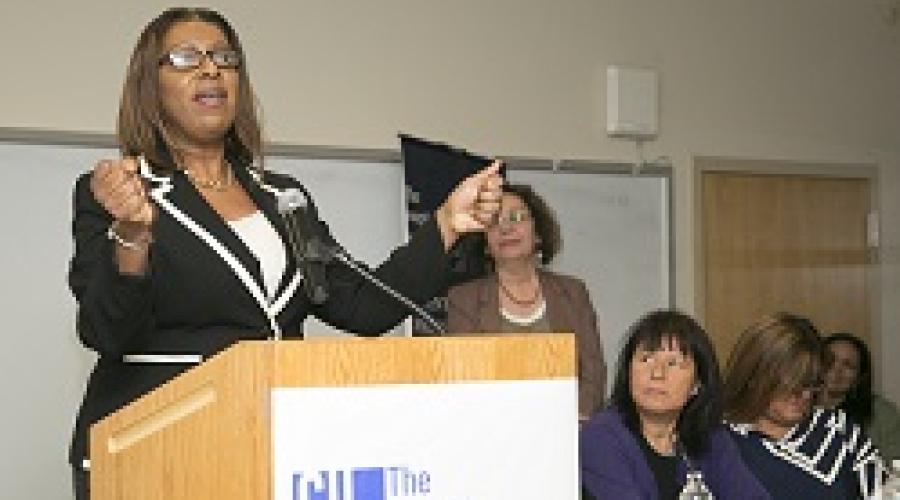
Reporting on Labor
New York Times labor correspondent guest lectures at Worker Institute class
The New York Times labor reporter Steven Greenhouse visited the Worker Institute in New York City on April 23 to speak with students about his work covering the 2011 attacks on collective bargaining in Wisconsin and Ohio, the current debates about minimum wage and the one-year anniversary of the Bangladesh factory collapse.
Fifteen students in the “History of Public Sector Unions” course attended the Wednesday lecture.
“In the aftermath of the building collapse, brave employees went through the rubble to take pictures of the brands that were manufactured there.” Greenhouse said these photos exposed brands like The Children’s Place, Sears and Wal-Mart that were manufacturing products in the factory.
Bangladesh’s Rana Plaza building collapse, which on April 24, 2013, was the largest disaster in garment worker history. The collapse killed over 1100 people and injured over 2500 more. “In New York, we think of the Triangle fire which took place over 100 years ago, but more than seven times as many workers died last year in the building collapse,” said Greenhouse.
Greenhouse was invited to talk about his experience covering the 2011 demonstrations in Wisconsin. “Scott Walker announced the changes in collective bargaining on Friday afternoon and by Monday 10,000 people were marching.” The large demonstrations were reflective of Wisconsin’s history of great progressive movements, Greenhouse said.
Gene Carroll, co-director of the Union Leadership Program at the Worker Institute, teaches the course. Carroll said, “The students in the class are from various locals of AFSCME’s District Council 37. I thought it would be interesting for students to hear about Steven Greenhouse’s experience covering the Wisconsin demonstrations given AFSCME’s roots in Wisconsin.”
In 1932, the first public sector workers came together to form the Wisconsin State Employers Union/ Council 24. These workers set the stage for other public sector workers and the creation of the American Federation of Municipal, County and State Employees (AFSMCE) in 1936.
Wisconsin Gov. Scott Walker’s changes to collective bargaining laws have reduced the number of unions and their power, Greenhouse said. “Unions in Wisconsin are struggling to survive,” he said, referring to his February 22 New York Times article, “Wisconsin’s Legacy for Unions.”
Greenhouse also discussed recent stories about the Coalition of Immokalee Workers, the Taxi Workers Alliance and the Fast Food Forward campaign. “The fast food movement has turned into a nationwide movement putting the issues of low wage workers, minimum wage and inequality back into the public discourse.”
The most interesting stories are about social justice, Greenhouse said. “With between 140 and 150 million workers in the U.S., there is a never ending list of interesting stories to tell including health and safety, discrimination, equality, sexual harassment.”
“The History of Public Sector Workers” course is part of a partnership program among DC37’s Education Fund, the Worker Institute at Cornell and the City University of New York’s Joseph S. Murphy Institute. The two-year, 16-credit program is open to all members of DC37. Tuition is covered by the union’s Education Fund.
